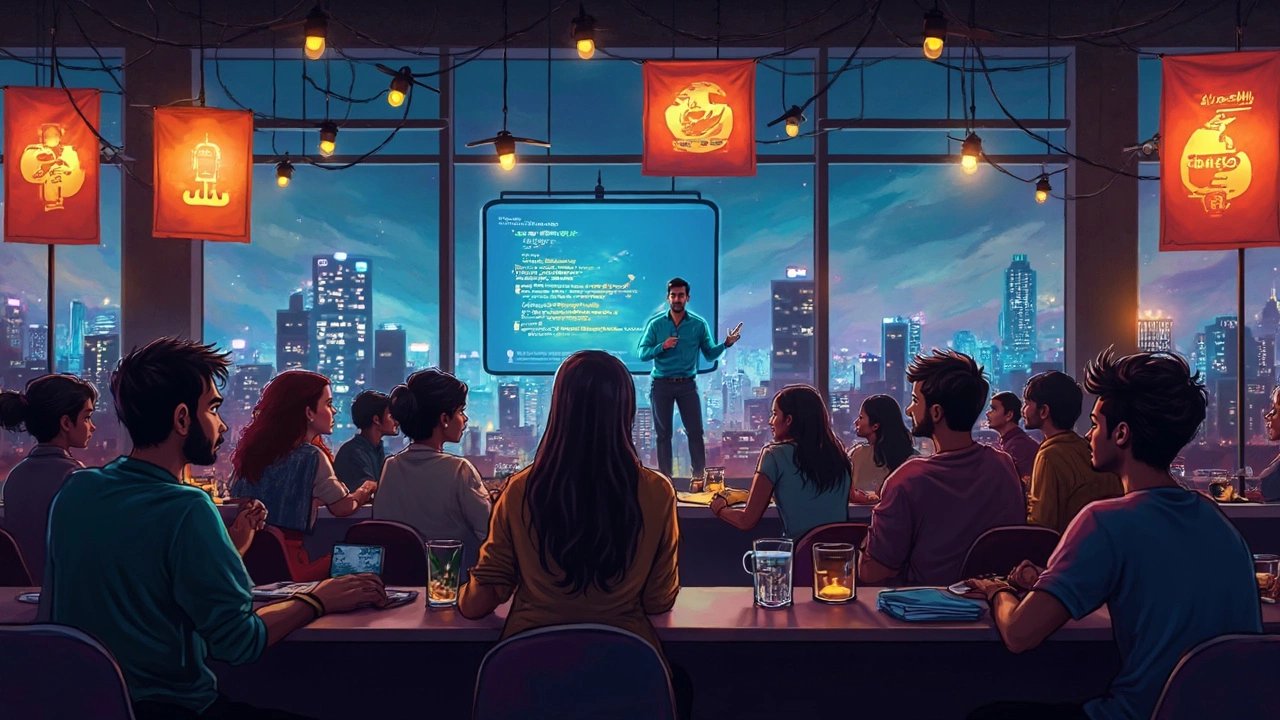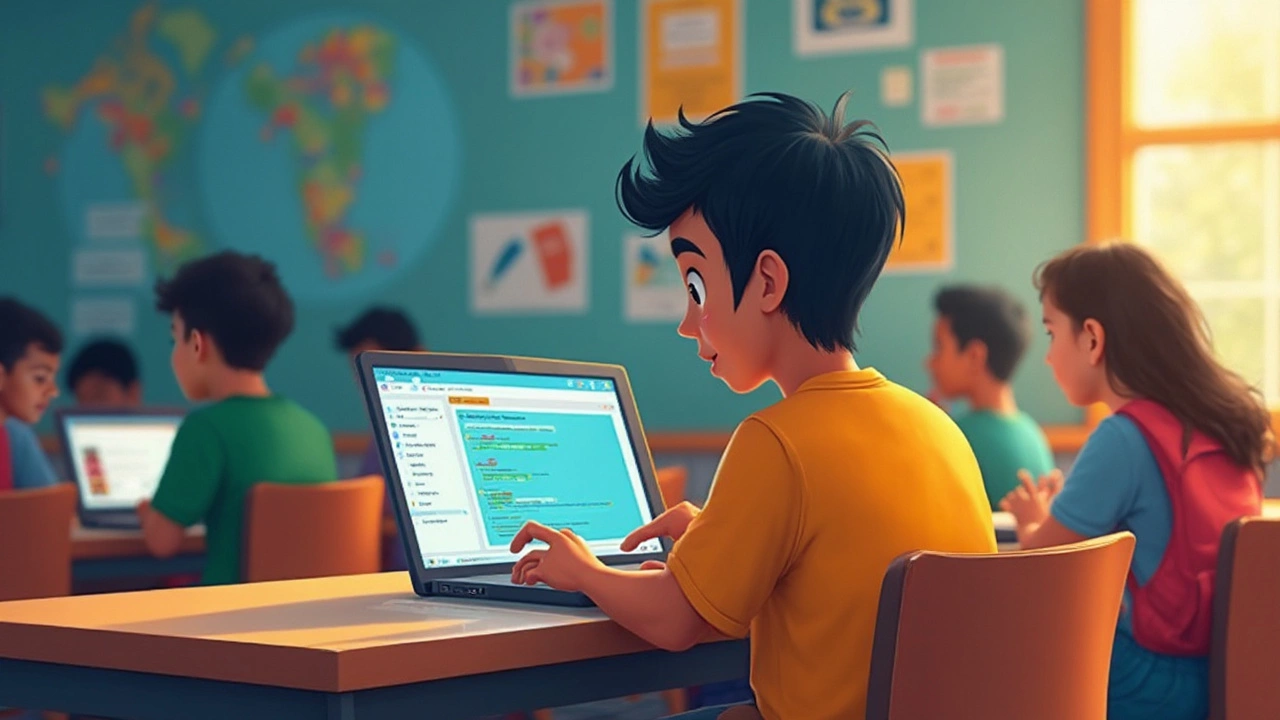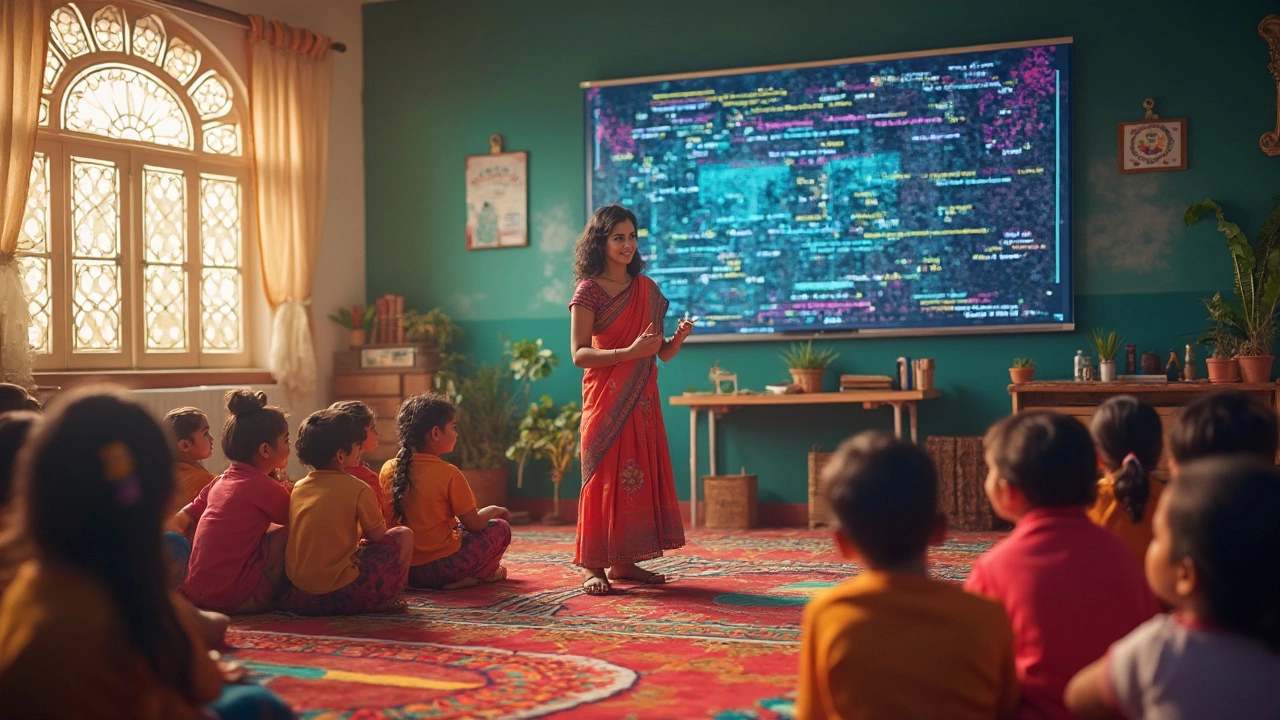Ever wonder if Python truly lives up to its reputation as an easy language to learn? You're not alone. Python’s syntax is simple and resembles everyday English, which makes it a hit among newbies.
Python is often the first language suggested for budding programmers. Why? Because it's designed to be reader-friendly, with fewer complex rules than many other languages. Plus, it's got a massive community and tons of free resources that make learning a breeze.
Don't just take my word for it – dive into any beginner course and you'll find interactive exercises that instantly immerse you in writing actual code. And if you ever get stuck, countless tutorials and forums are waiting to help you out. So, is it easy? I'd say, give it a shot and see if it clicks with you!
- The Simplicity of Python
- Python's Popularity in Real Life
- Python vs Other Languages
- Learning Resources Abound
- Common Challenges and How to Overcome Them
- Practical Tips for Beginners
The Simplicity of Python
At its core, Python is renowned for its simplicity. The syntax resembles regular English, which means you don’t have to memorize tons of symbols or cryptic structures. It’s designed to be straightforward, making it a breeze for complete beginners to grasp the basics quickly.
Let’s talk about Python’s indentation. Instead of using semicolons or brackets like other languages, Python uses indentation to signify code blocks. This forces you to write clean and readable code, reducing the chances of errors. In essence, you’re forming good coding habits without even trying.
Readability and Community Support
The readability of Python is legendary. Developers often say, “If you can read English, you can read Python.” This readability not only makes it easier for beginners but also fosters collaboration. Multiple developers can understand and contribute to a Python project without getting bogged down by complex code.
The Python community is huge. And by huge, I mean millions of active users ready to help and support you. Whether you're stuck on a coding problem or need guidance on best practices, there's a giant network of developers, forums, and resources at your disposal.
Libraries and Frameworks
Python has a library for almost everything. Need to crunch numbers? Check out NumPy and pandas. Want to dive into web development? Give Django or Flask a try. The beauty of these libraries is that they abstract away complex tasks with simple, intuitive commands, saving you time and effort.
Here’s a peek at some popular Python libraries:
- NumPy: Essential for scientific computing and performing complex calculations.
- pandas: Fantastic for data manipulation and analysis.
- Matplotlib: Brilliant for creating static, interactive, and animated visualizations.
- Flask & Django: Perfect for building web applications quickly and efficiently.
All these factors combine to make Python not just easy but also enjoyable to learn and use. So if you're considering jumping into coding, give Python a shot. Its simplicity and power might just surprise you.
Python's Popularity in Real Life
Have you ever wondered why Python is everywhere? Dive into any tech talk or coding class, and someone's bound to praise it. It's not just hype—Python is genuinely popular for some solid reasons.
Boosted by Major Companies
Major companies like Google, Netflix, and NASA use Python for various projects. Google's search algorithms, Netflix's recommendation engine, and NASA's space mission planning harness this powerful language. It's not just giants, though—startups love it too for its versatility and ease.
A Huge Community Support
Imagine you're stuck on a programming problem. With Python, you're never alone. There's a massive community of developers ready to help you out. Websites like Stack Overflow and Reddit have forums buzzing with advice, code snippets, and solutions.
Diverse Applications
You can use Python for almost anything. Web development, data science, artificial intelligence, and even game development. Its wide range of libraries and frameworks makes it suitable for a variety of tasks, from building a website to crunching big data.
Learning Has No Age Limit
You might think coding is just for whiz kids, but people of all ages are picking up Python. Thanks to its simple syntax, it's taught in schools from an early age and is even popular among hobbyists and professionals looking to upskill.
| Year | Rank in TIOBE Index |
|---|---|
| 2020 | 3rd |
| 2021 | 2nd |
| 2022 | 1st |
This table shows how Python climbed the ranks quickly in the TIOBE Index, reflecting its growing popularity year after year.
So, the real question is, if Python is so popular, why not give it a try yourself? Whether you're looking to launch a career or just dabble, Python holds a promise of possibilities.
Python vs Other Languages
Alright, so you're trying to figure out how Python stacks up against other programming languages. Fair question! Let's break it down.
Why Python Gets the Nod
First off, Python's readability is a big deal. The syntax is uncluttered, which makes it super easy for beginners to catch on. Other languages like Java and C++ have their perks, but they can be a bit heavy with their stricter syntax rules and more extensive code just to get a basic function running.
Performance Matters
Sure, Python's not the fastest language out there. When you're comparing raw speed, languages like C++ might outpace Python. But unless you're working on high-performance computing tasks, Python's speed is more than enough for everyday applications.
Here's a quick look at some common applications of different languages:
| Language | Common Use Case |
|---|---|
| Python | Web Development, Data Analysis, AI |
| JavaScript | Web Front-End |
| Java | Enterprise Apps, Android Development |
| C++ | Game Development, Real-Time Systems |
Community and Resources
Python boasts an enormous community, and that matters a lot when you're learning. Tons of tutorials, forums, and open-source projects are available to help out. It's something C++ or Java might lag behind in, simply because they're not as trendy in the kiddy pool of beginner coders.
Use Cases
- Python is widely used in data science and machine learning. For example, libraries like pandas and TensorFlow make it a no-brainer for these fields.
- If you’re into web development, Python's Django framework makes building websites a seamless process. But if web animations and interactive sites are your jam, JavaScript might be your go-to.
Ultimately, the best language really depends on what you're planning to do. But if you're starting out, Python is an excellent first step into the world of coding.

Learning Resources Abound
Thinking about diving into Python but worried about getting stuck? No sweat—there’s a treasure trove of learning materials available for every type of learner out there.
YouTube is a great place to start. You’ll find countless channels dedicated to teaching Python in bite-sized pieces, making it a top choice for visual learners. For those who prefer something more structured, platforms like Coursera and Udemy offer comprehensive courses, often created by experts from top institutions.
Books and eBooks
If you’re old school and love the feel of a book, you’ve got plenty of choices. Titles like “Automate the Boring Stuff with Python” are popular for beginners because they focus on practical applications rather than just theory.
Interactive Platforms
For hands-on practice, sites like Codecademy and LeetCode allow you to write and test code directly in your browser. This interactive approach is fantastic for reinforcing what you learn right on the spot.
Community Support
Don’t forget the power of community. Websites like Stack Overflow and Reddit have vibrant groups where you can ask questions, engage with other learners, and get support almost instantly. Plus, contributing to these communities is a great way to deepen your understanding.
According to a 2023 survey on programming languages, Python was ranked as the most used language by developers worldwide.
The wealth of learning resources means you can pick and choose what works best for you. Whether you're a visual learner, a bookworm, or someone who learns by doing, there's something out there for everyone.
Common Challenges and How to Overcome Them
Learning Python, like picking up any new skill, comes with its set of challenges. Don't be surprised if you hit a few bumps along the road – it's only natural!
Understanding Syntax
The infamous indentation error is something every Python newbie encounters. One misplaced space can throw everything off! Python uses indentation to define code block structures. So, always check your spaces and tabs. Tools like code editors can help flag these mistakes.
Getting the Logic Right
Sometimes, knowing what each line of code does is the easy part. But stitching it together into a working program? That takes some getting used to. Try breaking problems into smaller pieces. Work through each part step by step, and soon the broader logic will start making sense.
Debugging Nightmares
Bugs can feel like digital rodents messing with your code. Most of the time, it’s a simple typo or missed import statement. Don't shy away from using debugging tools or even a humble print statement to spot where things go wrong. And remember, Google is your friend!
Information Overload
There's a mountain of learning materials out there. How do you choose? Start with beginner-friendly recommendations, maybe a free course on a platform you like. Whether it's video tutorials or books, find what works best for you and stick to it to avoid getting overwhelmed.
The Confidence Gap
Last but not least, a lack of confidence can stop you from progressing. It's okay to make mistakes; they're truly the best teachers. Try building small projects once you grasp the basics. Completing them will boost your confidence and give you practical knowledge.
And hey, remember this: everyone struggles a bit when learning Python or any new language. The key is to persevere and enjoy the learning journey!
Practical Tips for Beginners
Diving into the world of Python can be both exciting and a tad overwhelming. But with these practical tips, you'll find yourself coding like a pro in no time.
1. Set Up a Friendly Environment
Before you start, ensure you’ve got a good setup. Download the latest version of Python from its official site and choose an easy-to-use code editor. Many beginners love VS Code or PyCharm for its user-friendly interface.
2. Start with the Basics
No need to rush into complex stuff. Begin with simple programs. Get comfortable with basic syntax, variables, loops, and conditions. There are tons of online tutorials designed for newcomers, so take advantage of them.
3. Practice Regularly
Consistency is key in mastering programming. Set aside time each day, even just 30 minutes, to practice writing scripts. The more you code, the better you'll understand.
4. Work on Mini Projects
Try creating small projects that interest you. Whether it’s a calculator or a game of tic-tac-toe, applying what you’ve learned makes a huge difference.
5. Learn from the Community
The Python community is massive and incredibly supportive. Join forums like Stack Overflow or Reddit. Attend local meetups if you can. Asking questions and seeing how others solve problems is invaluable.
6. Utilize Resources Wisely
The internet is rich with resources. Sites like Codecademy and Coursera offer structured courses, while YouTube is great for hands-on tutorials. Mix it up to see what learning style suits you best.
| Resource | Type |
|---|---|
| Codecademy | Interactive Course |
| Stack Overflow | Forum |
| VS Code | Code Editor |
Remember, mastering Python takes time and patience. Embrace mistakes as part of the journey, and keep experimenting. Most importantly, have fun with it!




